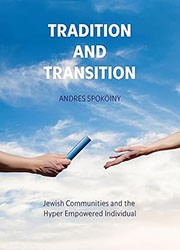The endpapers of An Egg for Shabbat feature chickens, each one wearing a different colored triple-tiered scarf. There are also kittens in different poses and an assortment of eggs interspersed among the animals. Mirik Snir and Eleyor Snir, a mother and daughter team, have created a book about preparing for Shabbat that also teaches about cause and effect, the passing of time, and the week’s reassuring cycle of events. Using a comic strip format and rhyming text, this clever picture book addresses the age-old question of which came first, the chicken or the egg, with a uniquely Jewish spin.
Each section of the book conceptualizes one day of the week with a number of chickens corresponding to that day’s order. Sunday begins with one bird and one request by Ben’s mother to bring her an egg from the animal pen. Pictures in blue and gray alternate with brightly colored scenes as captions and word bubbles tell the story. At first, Ben experiments with how to safely transport the egg. Later, he learns that, even with the most reliable method, accidents can happen. Legitimate curiosity about what is inside the egg also leads to problems. Ben worries about the possibility of disappointing his mother but she patiently repeats that he “learned a lesson, and that’s fine.” By the end of the week, Ben has synthesized a number of different lessons which are delicately illustrated in a miniature list including: “I will not toss eggs in the air, No eggs on head, I wouldn’t dare.”
The special bond between mother and child shines in every picture. Ben’s mother wears a dark red and white striped tunic, which matches Ben’s red boots. In another scene, Ben sits among the chickens, lovingly holding one up to his cheek as he asks himself, “What have I learned so far this week?” His question echoes his mother’s statements about the value of learning from mistakes.
At week’s end, Ben’s mother brings out the challah she has baked and asks him to complete it by glazing the loaf with eggs; the purpose of the week’s events becomes clear to both Ben and to young readers. The celebration of Shabbat is realistically divided into two pictures. The first is a Shabbat evening table where only Ben and his mother are seated, accentuating their closeness. There are glowing candles, a simple wine bottle and glass, and a colorful bouquet in a blue-and-white vase mimicking Delft pottery. The background of yellow flowers and tiny six-pointed stars is understated. The day of Shabbat has a more stylized representation of rest, with mother and son lying quietly against a black and white background.
When Sunday returns, Ben’s mother calls him again. This time, a parade of chickens is preceded by the proverbial egg, reaffirming that Ben’s important errand to retrieve the egg is really the beginning of the Jewish week, which will eventually culminate in a day of celebration and rest.
Emily Schneider writes about literature, feminism, and culture for Tablet, The Forward, The Horn Book, and other publications, and writes about children’s books on her blog. She has a Ph.D. in Romance Languages and Literatures.





